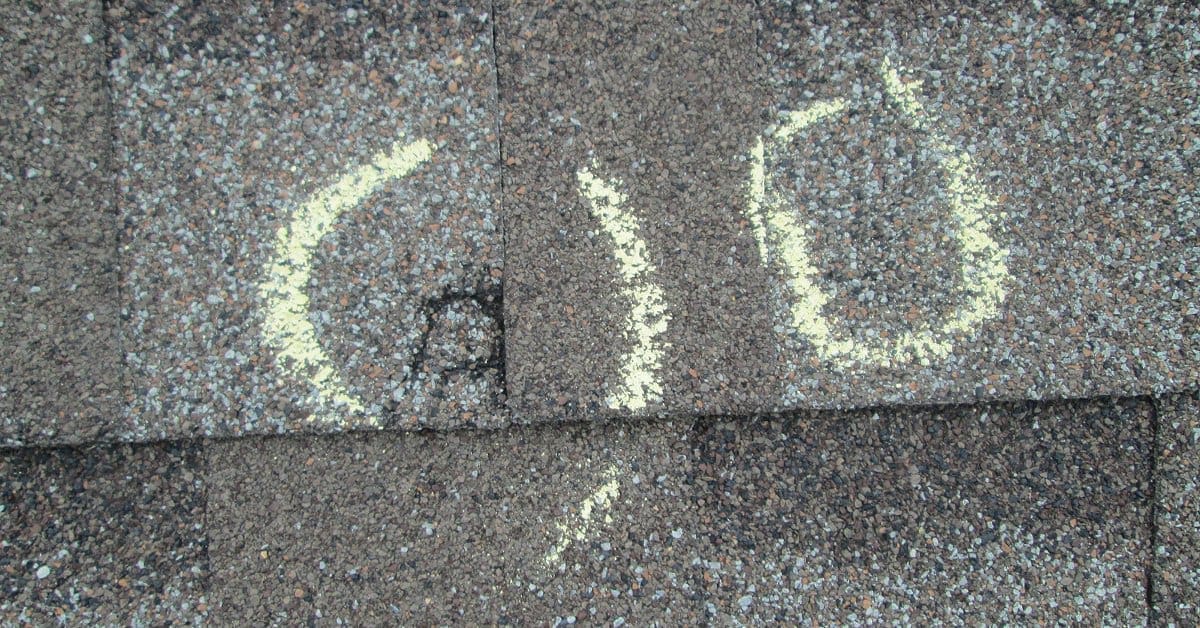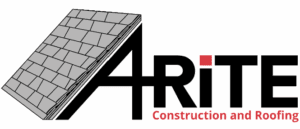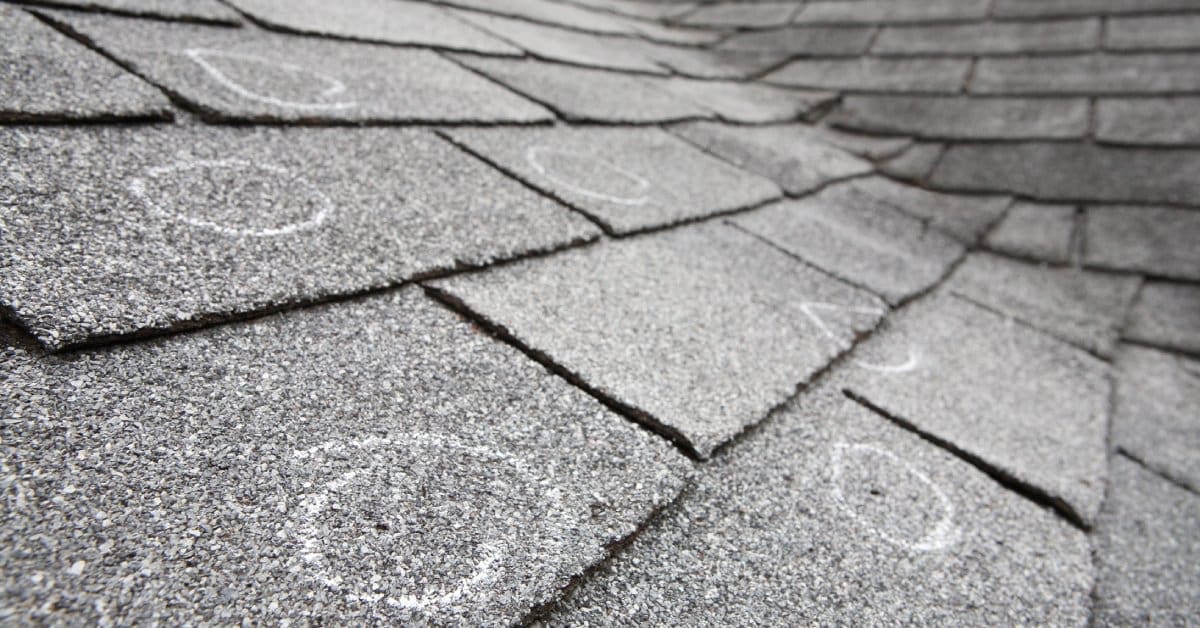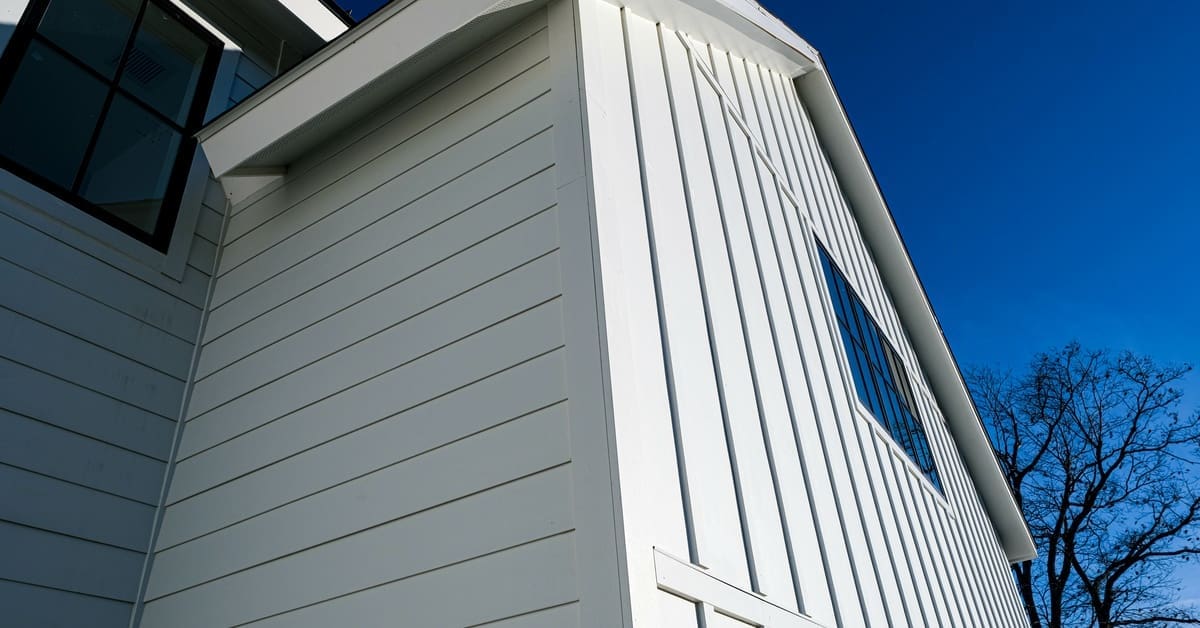Hailstorms leave a lasting impact on your property, often causing damage that may go unnoticed without an inspection. Identifying hail damage prevents minor issues from worsening and could lead to a smoother insurance claim process.
Hail damage manifests in subtle ways that are easy to miss. Discover how to identify the common signs of hail damage and take the necessary steps to preserve your property.
What Is Hail Damage?
Hail damage refers to the physical destruction caused by hailstones, which vary in size. They fall at different speeds depending on the storm, and the severity of the damage depends on the size of the hailstones, the wind speed during the storm, and the angle at which the hail hits something.
Large hailstones cause significant damage, breaking holes in roofing materials or smashing windows. Small hail may cause granule loss on shingle roofing. External factors, such as the age and condition of your home, also affect how susceptible it is to hail damage. Understanding these variables is key to assessing the impact of a hailstorm.
Common Areas Affected by Hail
Hailstorms can damage many things on your property, and knowing where to look makes inspections easier. Your roof typically takes the brunt of the impact, but windows, siding, gutters, and outdoor equipment are also vulnerable.
Landscaping and decorative fixtures, such as garden furniture, can take a beating in a hailstorm. It’s important to inspect them thoroughly after the storm passes. Familiarizing yourself with these common targets will guarantee that no damage goes unnoticed.

1. Hail Damage on Roofing
Your home’s roof is very exposed during a hailstorm, so it could sustain significant damage. After the storm, look for shingle bruising, which appears as soft spots from displaced granules. Cracking in individual shingles and granule buildup in the gutters are other signs of hail damage.
Punctures and cracks in asphalt shingles may form, allowing moisture to seep in and cause water damage that makes your roof more vulnerable throughout the year. Prioritize your roof during inspections to address potential issues before they worsen.
2. Hail Damage on Windows and Doors
Hailstones can leave visible marks on windows and doors, so don’t overlook them during inspections. Cracks, chips, or shattered glass are the most obvious signs, while damage to the frames or displaced sealing requires closer attention. Additionally, check for misaligned doors, as high winds and large hailstones may weaken their structural integrity.
Even small cracks or chips in glass can lead to drafts and heat loss, increasing your home’s energy bills over time. Addressing these issues helps to maintain the safety and energy efficiency of your home.
3. Hail Damage on Home Siding
Your home’s siding could sustain various forms of hail damage, depending on the building materials and the severity of the storm. Vinyl siding might show cracks or holes, while wood siding could display dents and chipped paint. It’s important to distinguish hail damage from general wear and tear by looking for patterns consistent with the storm’s direction.
Discolored or warped siding is another common sign of hail damage that you shouldn’t ignore, as it could indicate deeper structural issues. Taking a closer look at your home’s siding after a hailstorm can help with identifying and repairing damage.
4. Hail Damage on Gutters and Downspouts
Hail leaves serious damage to your home’s gutter system, often affecting its functionality. Check for dents, bends, or sections where the gutters separate from the home’s structure.
Damaged gutters lead to improper drainage, causing water to pool around your home’s foundation and creating long-term risks. A thorough inspection of the gutters and downspouts will help to prevent water-related damage during future storms.
Preventive Measures To Minimize Hail Damage
Taking preventive measures reduces the potential for hail damage to your property. Installing impact-resistant roofing materials and investing in storm shutters for windows are excellent long-term solutions.
Before an expected hailstorm, secure loose materials to prevent them from causing further harm. Regularly monitoring weather advisories allows you to take precautions and safeguard vulnerable areas. Make improvements to your home’s security and safety by replacing the current windows and siding with durable options.
Steel siding is impact-resistant and withstands the frequent strikes of falling hail. Add tempered glass to your windows to avoid cracks and chips for fewer repairs during severe hailstorms.
Steps To Take After Identifying Hail Damage
If you find hail damage, acting quickly prevents the problem from escalating. Document the damage thoroughly with photos and notes about the affected areas. Then, contact your insurance provider to report the damage and begin discussing your coverage options.
Applying temporary fixes to damaged areas, such as sealing cracked windows or covering roof leaks, prevents further deterioration. Seek professional repair estimates to support your claim and get appropriate compensation.

Why a Professional Inspection Matters
While a DIY inspection is a great starting point, professional inspections are essential for an accurate evaluation of hail damage. Our professionals at A-Rite Construction and Roofing have the tools and expertise to assess hard-to-reach areas, detect hidden issues, and provide an unbiased report. We also employ GAF roofing contractors in Wausau, WI who identify problems that you may overlook and provide shingles that increase the protection of your roof.
Professionals will document all damage, making the insurance claims process much smoother. Partnering with experts helps you protect your investment and avoid costly surprises in the future.
Filing an Insurance Claim for Hail Damage
Filing an insurance claim requires careful planning to maximize your chances of fair compensation. When meeting your adjuster, provide all documented evidence of the damage to avoid underreporting. Evaluate all affected areas thoroughly before finalizing the claim, as missed issues could lead to costly out-of-pocket repairs later.
Avoid agreeing to settlement offers without understanding the full extent of the damage. Preparation and communication with your insurance company will help you secure the support you need.
Recognizing hail damage is key to keeping your property safe and retaining its value. Vigilance in identifying damage and taking timely action, from inspecting your roof to checking your outdoor fixtures, will save you money and stress in the long term. Hailstorms may be unpredictable, but you can minimize their impact by taking preventive measures and seeking expert assistance.




